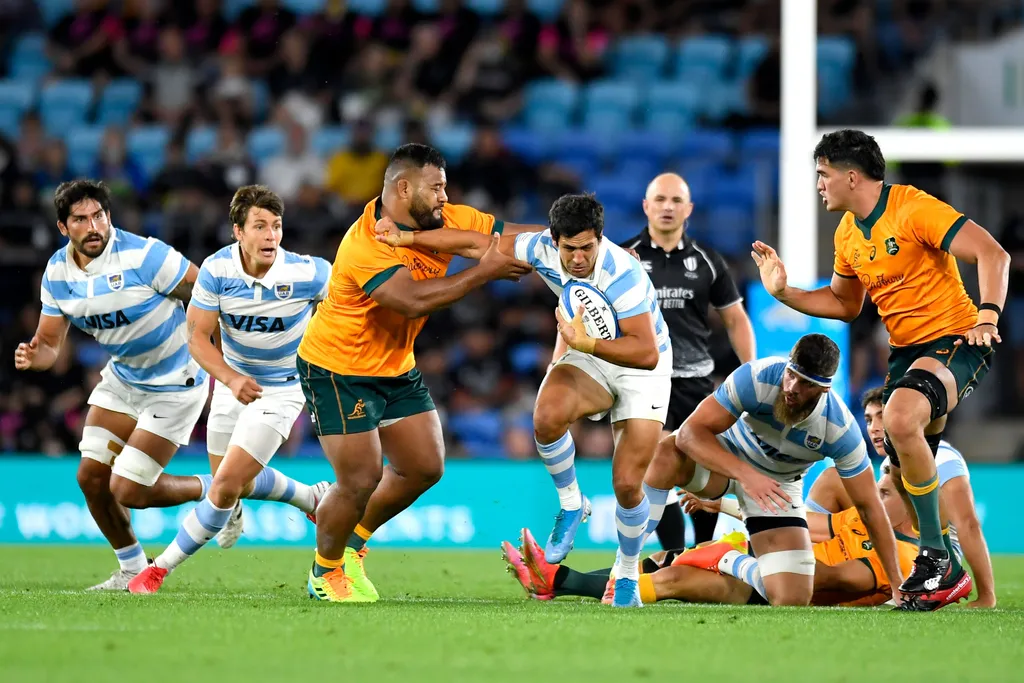Like all other sports in the world, rugby has various competitions that often pit the best of the best against each other. Of the many competitions that exist, a few stand head and shoulders above the rest. They are the spectacle that is the Rugby World Cup held every four years that features 20 of the top national rugby union teams, the Six Nations Championship that as its name suggests is contested by the top six northern hemisphere powerhouses in France, England, Italy, Scotland, Ireland, and Wales, and the Rugby Championship, which is the Six Nations’ equivalent for the top four teams in the southern hemisphere.
How does the Rugby Championship Cup work? The Rugby Championship works as an annual rugby union competition that features the four top teams in the southern hemisphere namely New Zealand, South Africa, Australia, and Argentina. The tournament’s format is a double round-robin where each team competes against the remaining team both home and away. Between 0 and 4 or 0 and 5 points are awarded depending on whether a team registers a loss, a victory, or a victory with an extra attacking bonus point. The team that accrues the most points in a given edition is declared the winner.

A Brief History
The Rugby Championship can trace its roots back to the beginning of the 20th Century and in 1903 in particular when New Zealand and Australia first competed against each other. At the time, rugby competitions were hard to come across forcing national rugby union teams to resort to organizing tours to friendly nations for that purpose.
Fueling this trend was the Home Nations tournament that had started a full two decades earlier and involved the nations from the larger United Kingdom – England, Scotland, Ireland, and Wales, which is credited as being the sport’s oldest competition.
South Africa would also later tour both New Zealand and Australia with the latter two forming and competing in a formal competition – the Bledisloe Cup – from 1931, which exists to date and has proven to be a resounding success.
A number of factors however stunted further growth of competitions between southern hemisphere teams. The two major ones were the First and Second World Wars and the absence of professionalism, which made it logistically challenging to facilitate tournaments with the desired frequency.
Introduction of Professionalism and Formation of the Tri Nations
Perhaps the most significant event in the history of rugby since the formation of the rugby union in 1871 occurred in 1995 when professionalism was finally allowed. The then-new dispensation allowed national rugby union teams and tournament organizers to source the necessary funds they required to take competitions to the next level without fear of reprisal.
New Zealand, Australia, and South Africa took immediate advantage of the development to launch the Tri Nations tournament in 1996. New Zealand dominated the inaugural edition to win it without losing a single match.
The All Blacks repeated the feat the next year before South Africa’s Springboks broke the streak in the 1998 edition. New Zealand nevertheless reclaimed the throne the next year before Australia put its stamp on the tournament by winning it for the first time in 2000 and successfully defending its title the next year.
Led by a spirited effort from greats like Christian Cullen, Dough Howlett, and Mark Robinson, the All Blacks were able to overcome the absence of talismanic wing Jonah Lomu to reclaim the Tri Nations Series crown in 2002. Lomu only featured in New Zealand’s opening match against South Africa but missed the remainder of the tournament.
New Zealand also managed to defend their title in 2003 before South Africa narrowly edged their peers to win their second Tri Nations trophy in 2004. The All Blacks swiftly resumed their winning ways the next year and went on to win four consecutive titles from 2005 to 2008 before South Africa won their third title in 2009.
The remaining two editions of the Tri Nations era were won by New Zealand and Australia in 2010 and 2011 respectively. The tournament’s format at the time shifted between triple round-robin (where the teams competed against each other three times) in non-World Cup years like 2006 and a double round-robin in World Cup years like 2007 in order to manage the wear and tear and fixture overlap that comes with participating in multiple competitions.
Becoming the Rugby Championship
The Tri Nations evolved into the Rugby Championship after the official inclusion of Argentina into the tournament in late November 2011. Rumors of Argentina’s intention to join the competition had been circulating since the mid to late 2000s.
The position was later confirmed in September 2009 when the tournament’s organizers revealed that they had started the process to bring Argentina on board by 2012. Indeed, rugby’s governing board, the International Rugby Board (IRB), had been in negotiations with Tri Nations planners SANZAR about the same since 2007 and had proposed to have Argentina included as early as the 2008 edition.
Their initial proposal however flopped because of two glaring issues that existed at the time: a broadcast rights agreement which existed between SANZAR and international broadcaster News Corporation that was set to lapse in 2010 and an absence of a sufficient professional structure within the Argentine Rugby Union (UAR) to facilitate the transition.
Of the two problems, the latter proved to be the more challenging one since professionalism was heavily discouraged in Argentina evidenced by UAR laws that existed that even went as far as expressly discouraging the establishment of a professional league.
The IRB attempted to intervene by holding a conference in 2007 to fast-track the UAR’s adoption of professionalism within five years. Still, their efforts were shot down when the UAR’s representatives unanimously voted to have their domestic league retain its amateur status. The IRB’s insistence was understandable since amateurism mostly favored semi-professional players who would have found it difficult to offer a worthy challenge to their peers.
The UAR eventually came around to an IRB-backed plan in early 2009 that saw 31 players from their domestic league transition into fully-fledged professionals and later become the first generation of Argentina’s representatives in the Rugby Championship after joining the outfit in late November 2011.
Since the expansion into the Rugby Championship New Zealand has continued its domination with eight title wins including two instances where they won the trophy for three consecutive years, and the most recent edition in 2022. Australia and South Africa have both won the title once whereas Argentina has finished dead last in all but one of the tournaments (2015).
